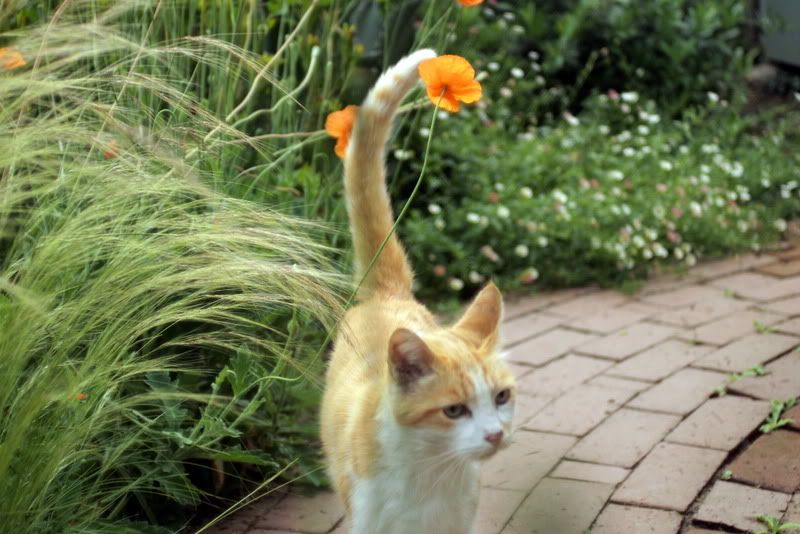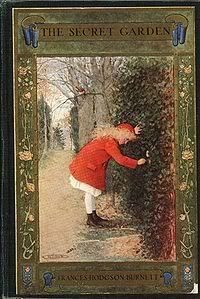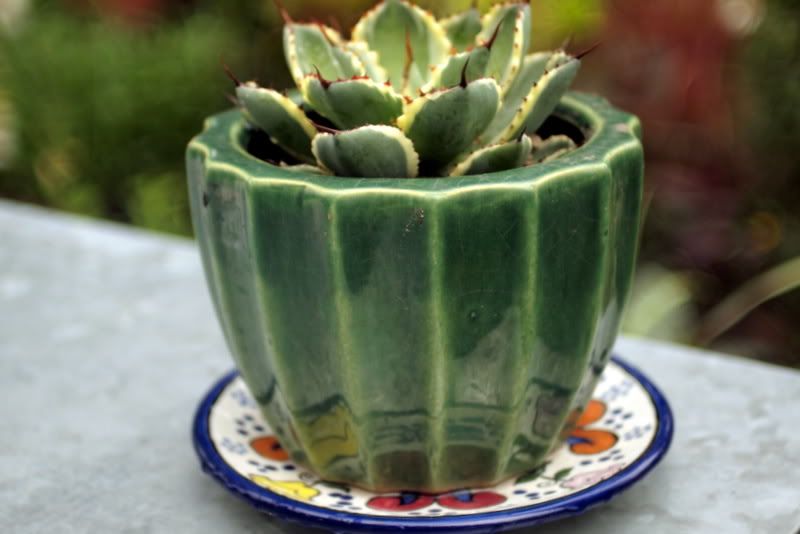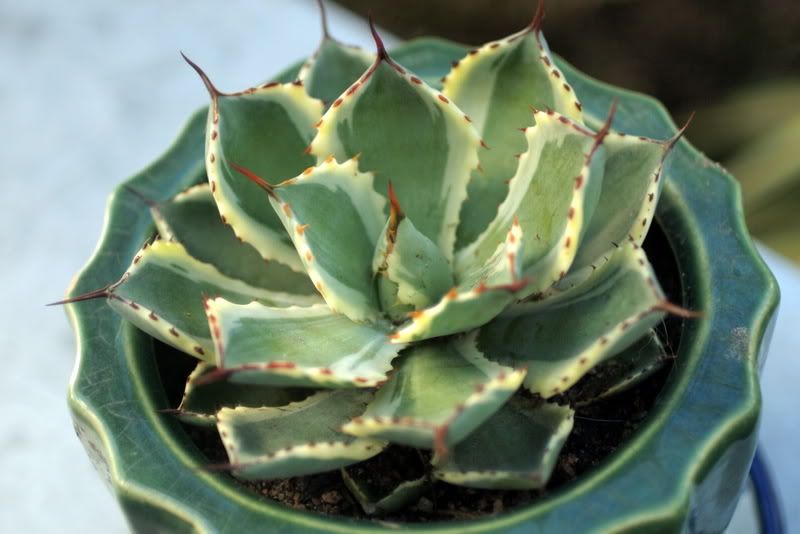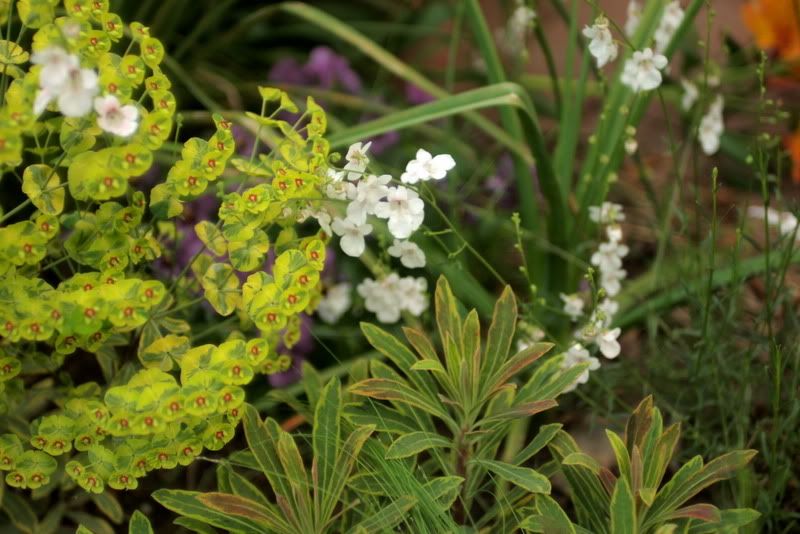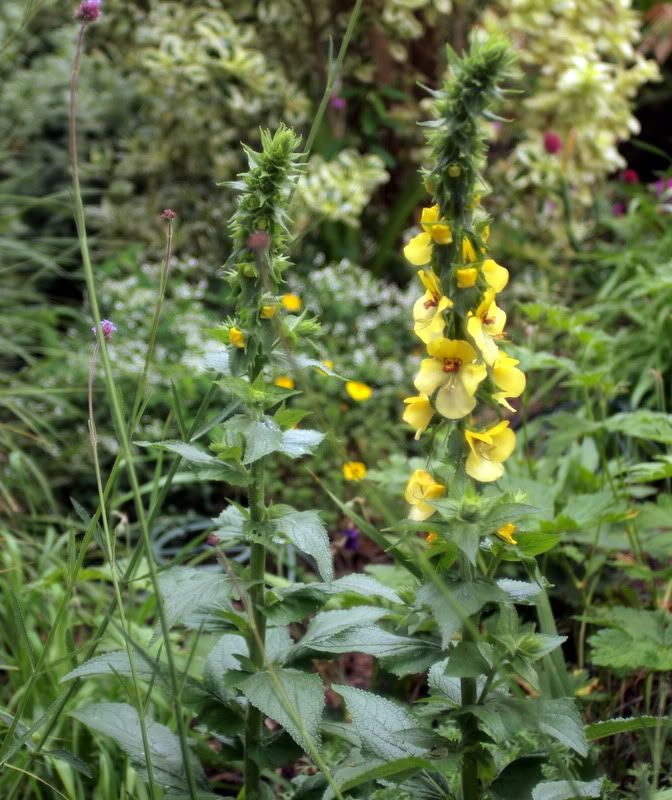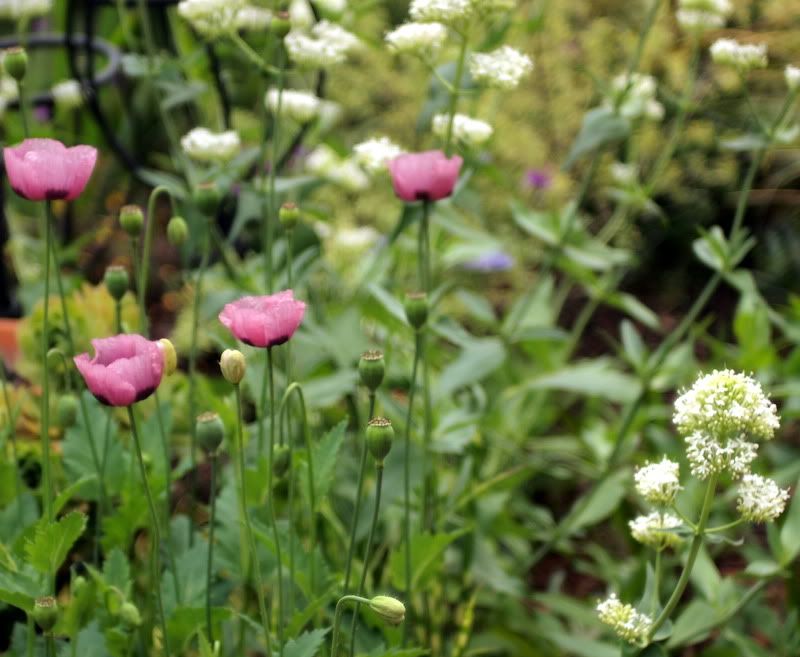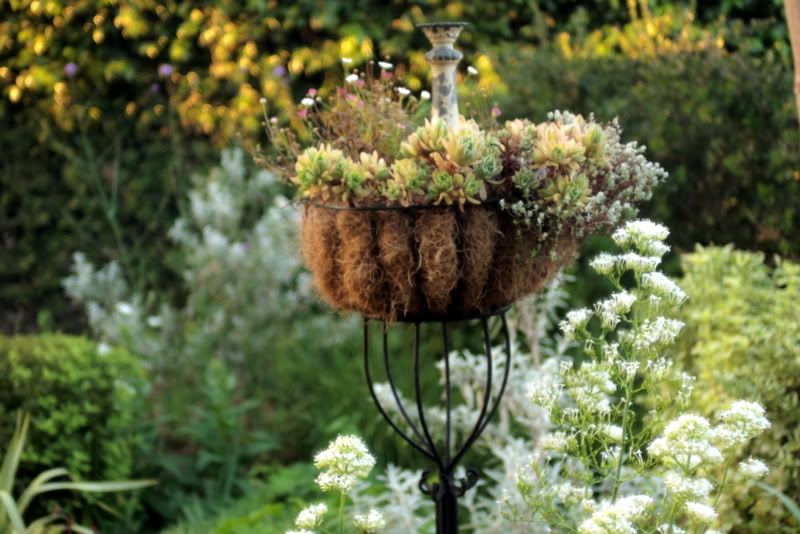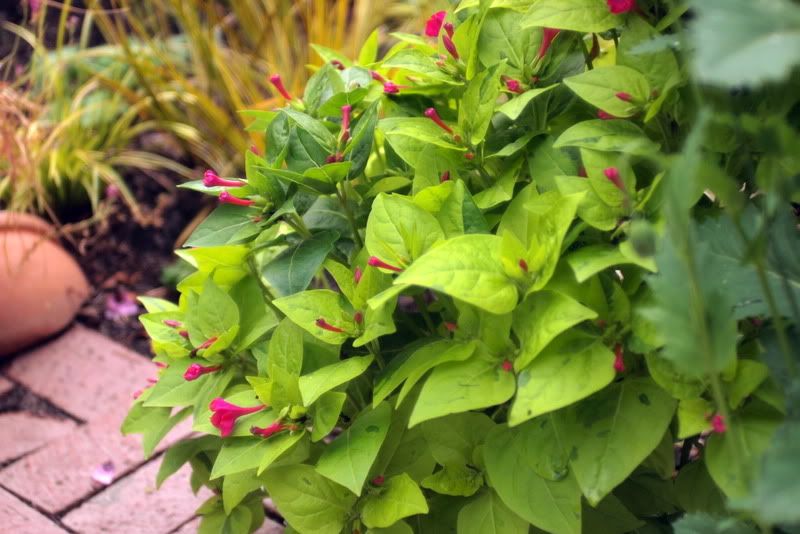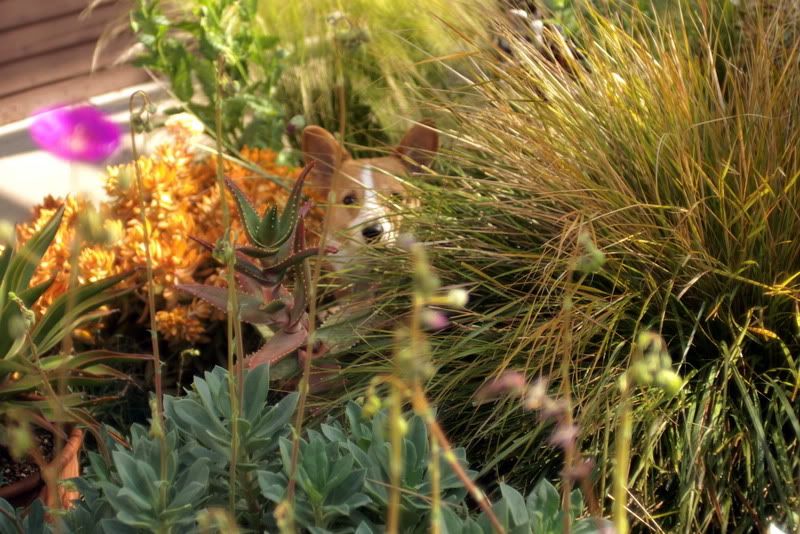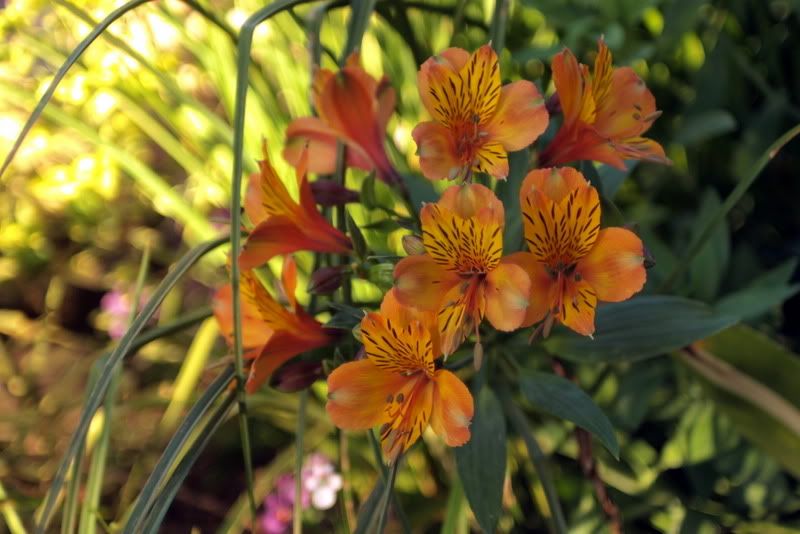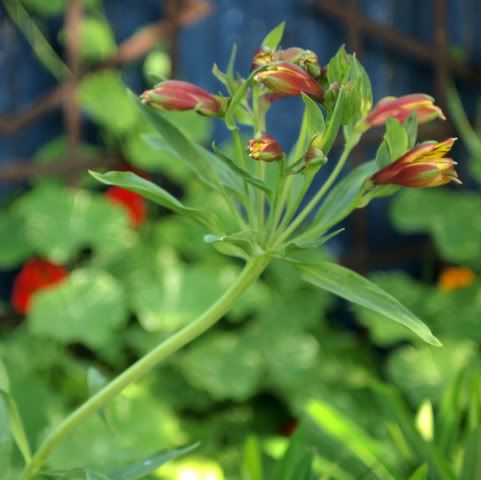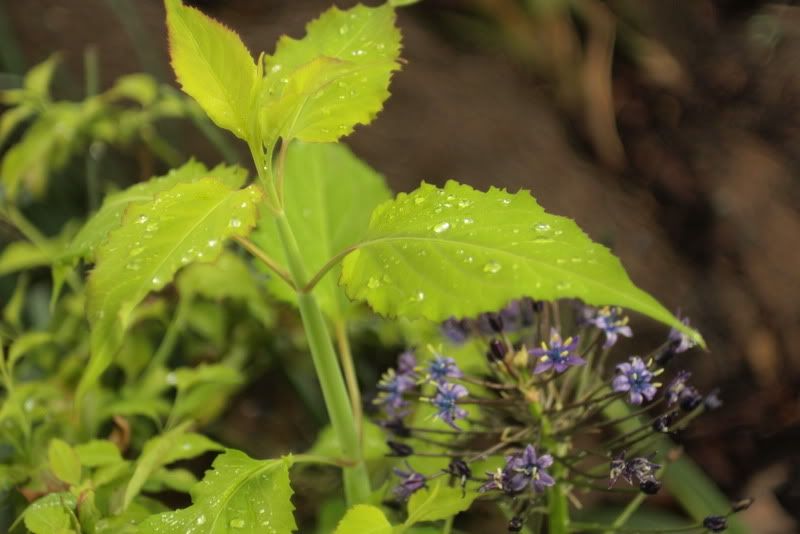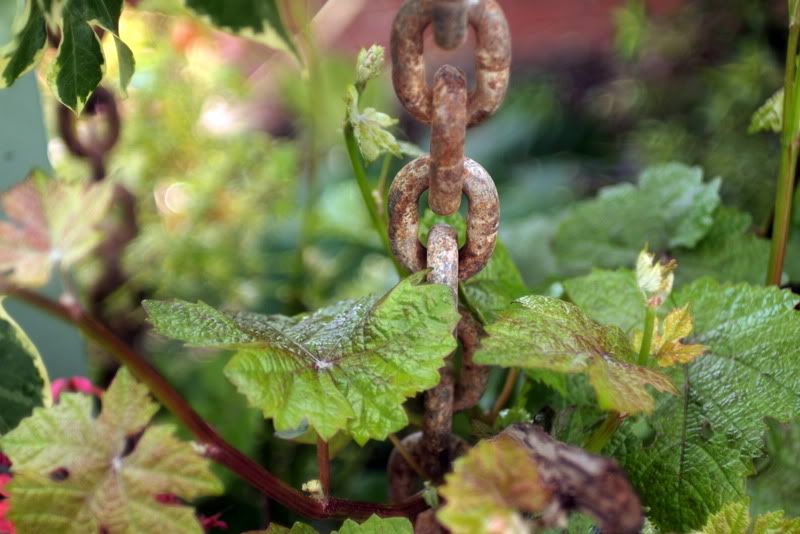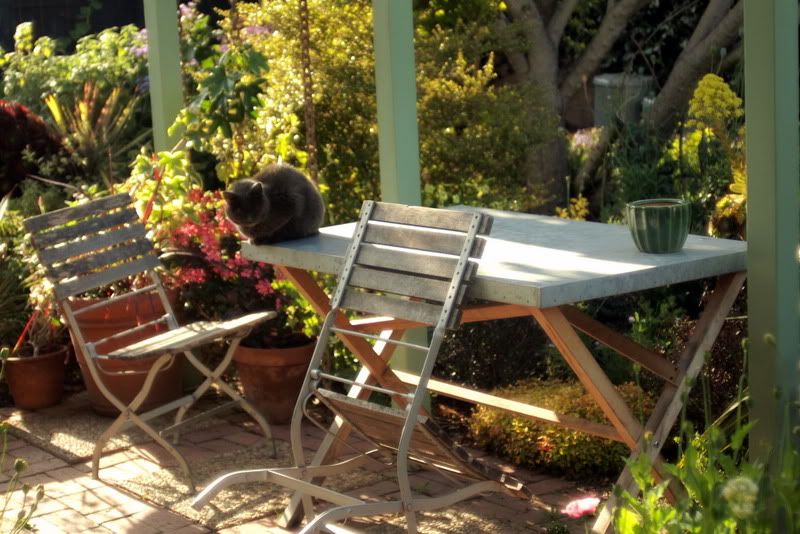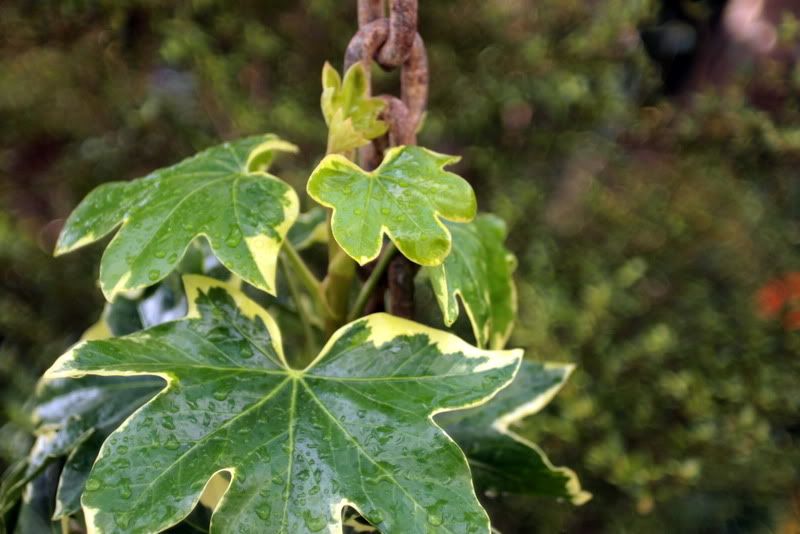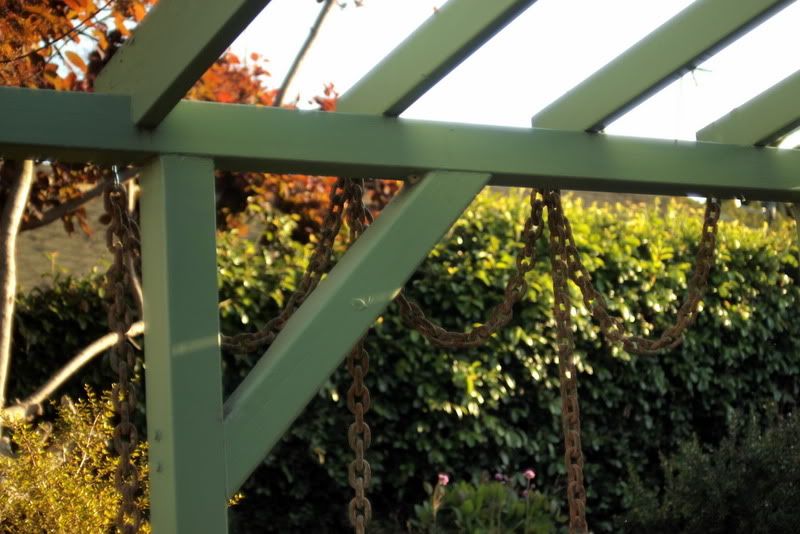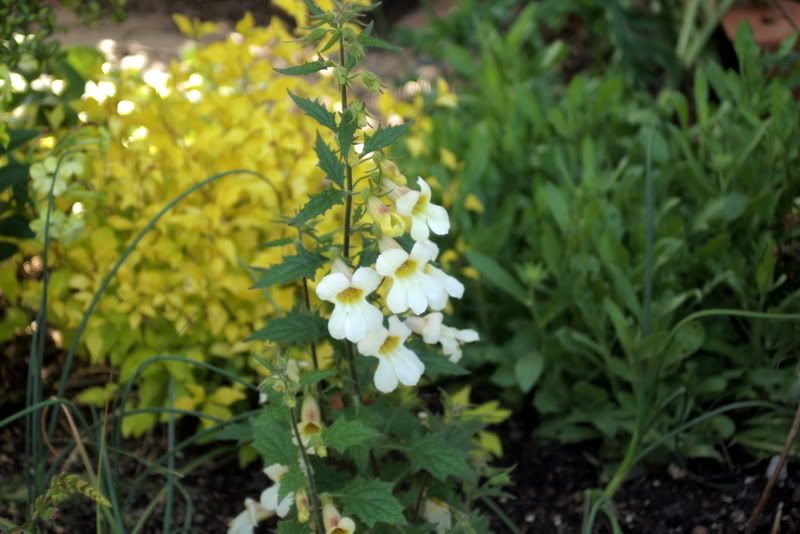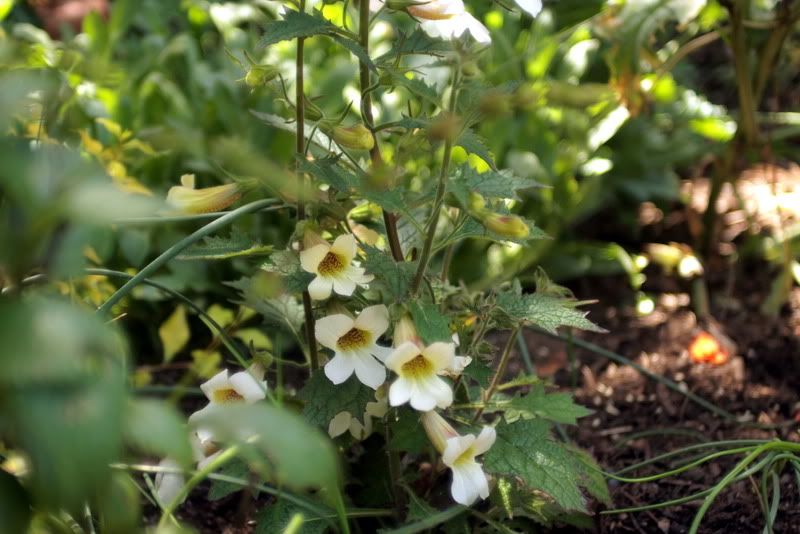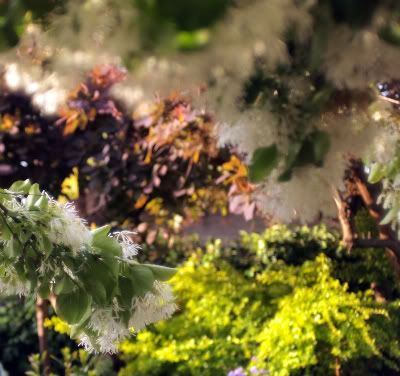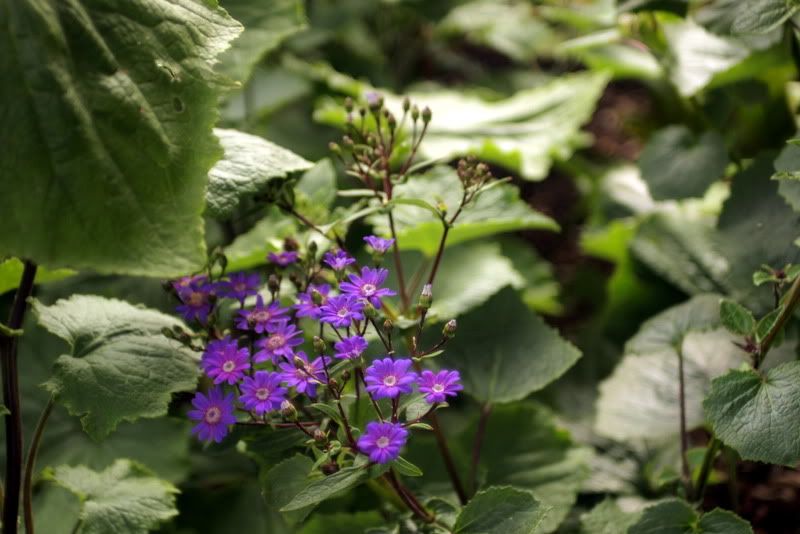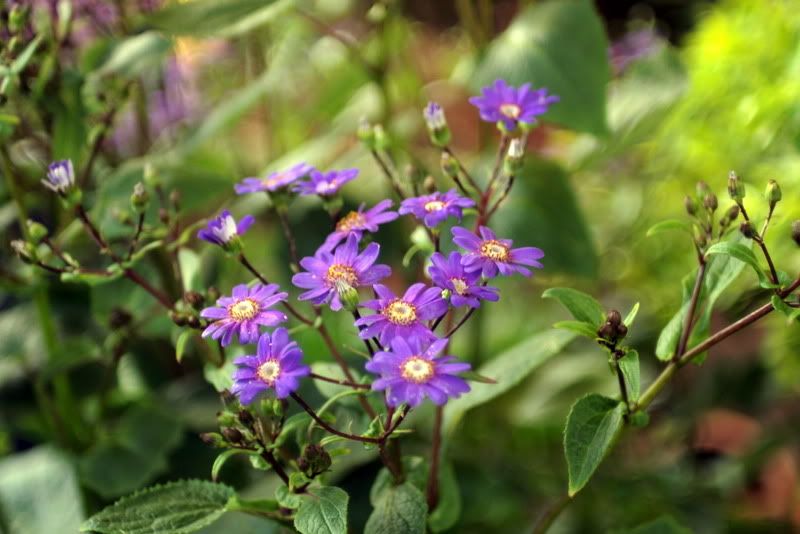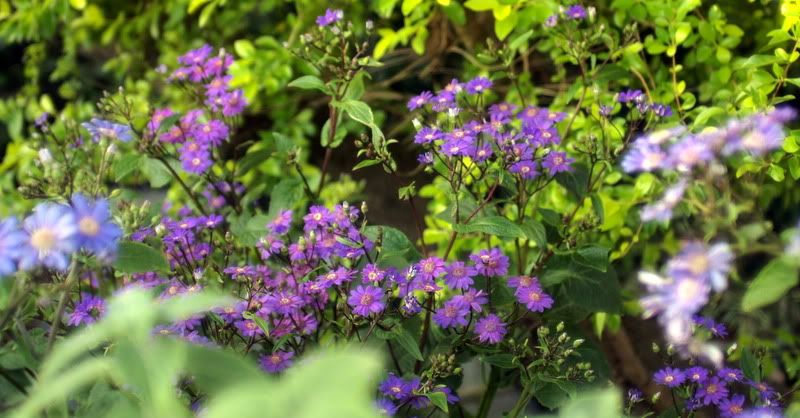Couple weekends ago I worked in the front garden. Removed a few bricks for Sempervivum ‘Spring Beauty.’
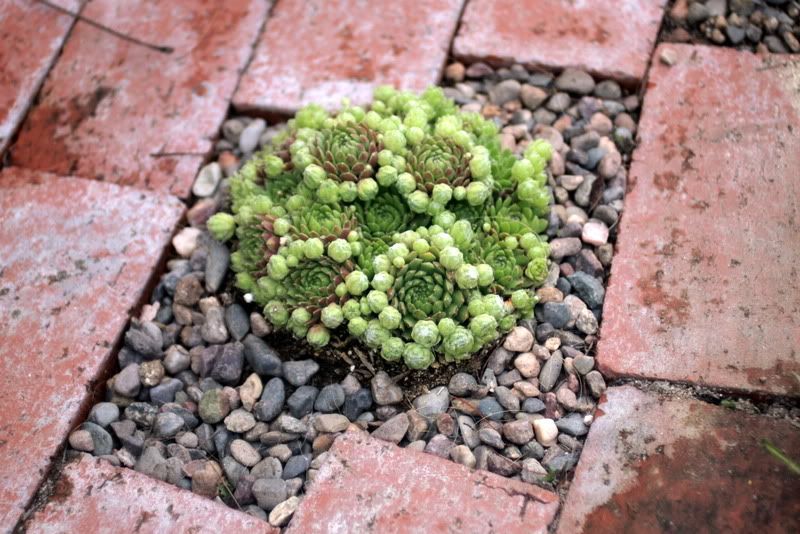
Then weeded the Spanish poppies from the bricks and cleaned out this agave of pups and old leaves.
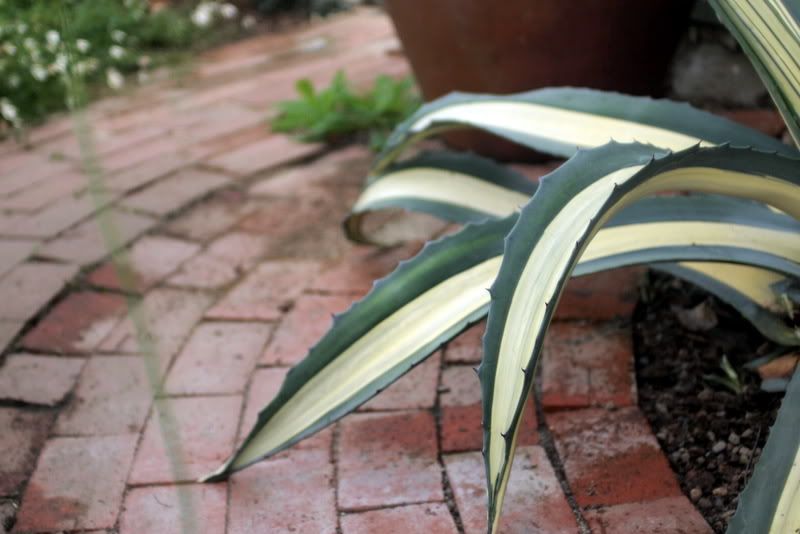
Why’s it such a big deal to work in the front garden? Possibly because, for me, a garden is synonymous with privacy and enclosure. Over and over, I find Francis Hodgson Burnett’s The Secret Garden cited by gardeners as a prime influence, and I’m sure reading that book multiple times as a kid formed my ideas, for good or ill, on gardens. A garden must have a gate to push open, it must be enclosed, and it must be your secret (for as long as you want to keep it).
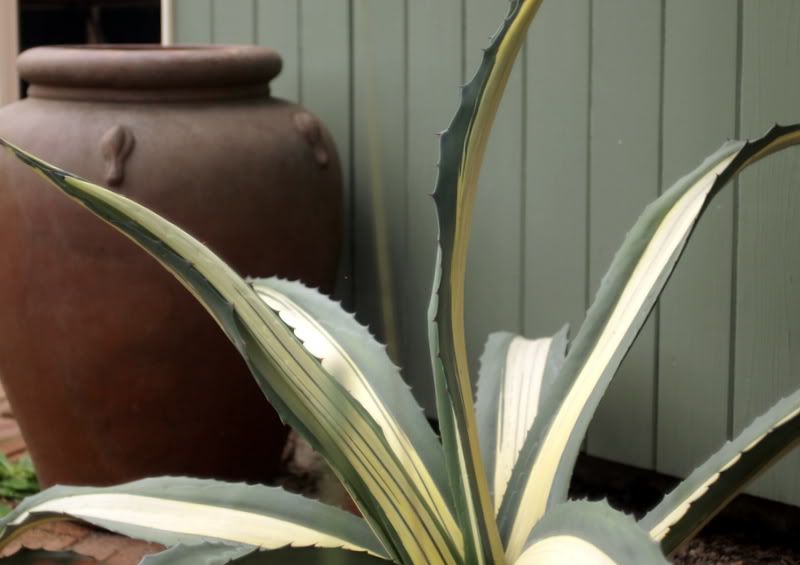
So it’s safe to say that the front garden has been low on the list of gardening priorities. It’s actually taken me a while to even consider it as a garden rather than a holding area for plants overflowing from the back garden. And you’d never know there wasn’t a monoculture of grass behind my boxwood hedge in the front yard if you didn’t stop to peer around it. The drought-tolerant boxwood hedge was a useful means of “greening” up the front of the house to hide the minor revolutionary act of taking out the lawn we inherited with the house many years ago, when such an act drew lots of raised eyebrows. Meadows, vegetable gardens, all manner of revolutionary acts can be insinuated into a neighborhood if the eye, like in a magic act, is tricked to look elsewhere.

Where and how people place plants can be so revealing. For example, where’s my civic spirit, to neglect the front and focus on my private garden in back? A friend used to argue with me that a boring front landscape didn’t necessarily mean there wasn’t a jardin des paradis in the backyard. I try to remember that when I pass miles and miles of boring front landscapes. And I’ve been on enough garden tours to note that the front garden often sleeps while the back garden parties, so it’s not just my own garden freak flag flying with this arrangement.
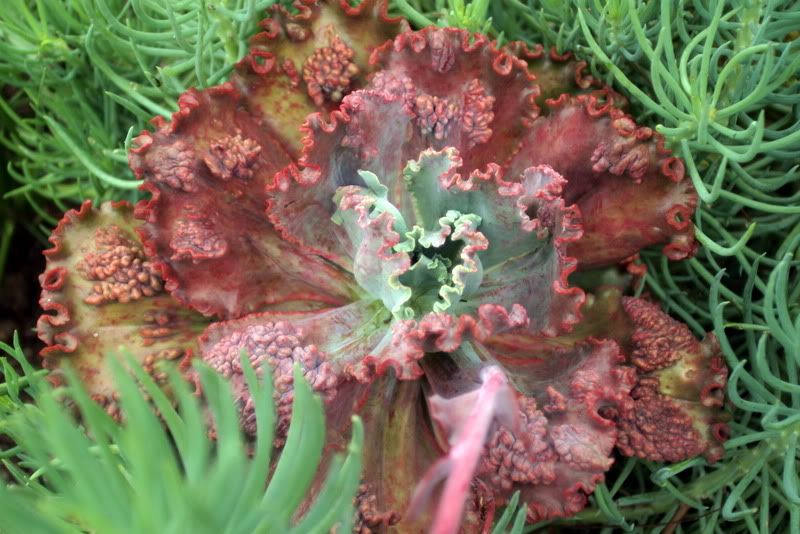
And I haven’t been exactly neglecting the front. It’s been through loads of incarnations, but it just doesn’t draw me in like the back garden. The front is a challenge, the back a refuge.

The front garden was enclosed long ago, to safely contain kids and dogs, but because of city ordinances the fences can be no higher than three feet. In effect, no privacy. So the private courtyard I intended for the front garden, an enduring design feature of mediterranean climates, was not to be. I can probably trace my renewed interest in the front garden to when the box hedges planted along the sidewalk reached over six feet in height, topping the fence. Unlike fences, the height of hedges is given a pass by the city (knock wood). Box comes and goes into fashion, with Piet Oudolf’s fantastically undulating boxwood hedges probably single-handedly nudging it back into current favor. It’s all I can do to remember to shear mine in a straight line twice a year, probably the only gardening “chore” I perform. I hate dragging the extension cord and inflicting all that racket on the neighborhood for 10 or so minutes, but I do love the refinement of box. And myrtle, for that matter, though it’s much slower growing. Here’s a peek of the hedge and fence, the cars and neighbors’ houses.

I love hearing the voices of passersby walking unseen behind the hedge, the voices’ owners popping into sight just as they pass. What this says about me psychologically, it’s probably best not to know. Observer, separate and apart, would be a guess. Gardens really do inhabit psychological as well as physical space.
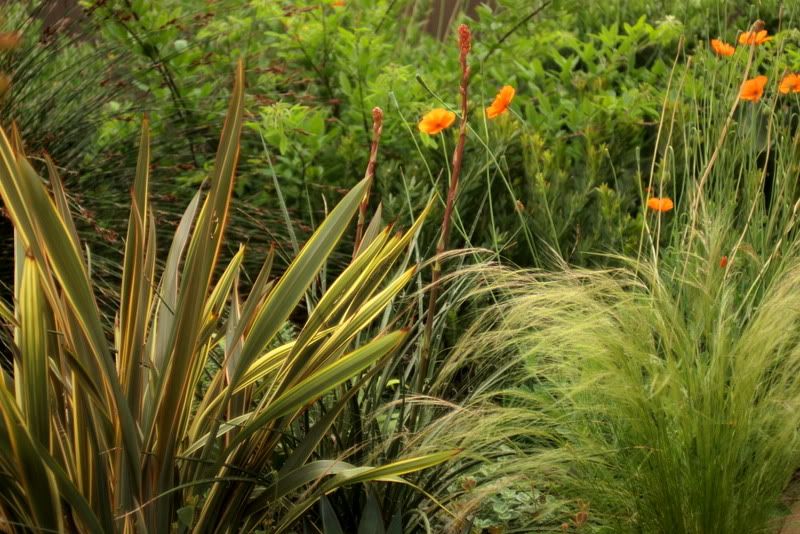
The front garden was graveled over long ago, then became a kind of testing ground for the toughest plants grown in the back garden. A simple, DIY, dry-laid brick path gets you where you need to go. Gravel is scraped away for new additions. When I decided I needed a larger border here a couple years ago, I sifted the gravel out of the soil for the border. L-a-b-o-r-i-o-u-s. The back garden is where I cosset and pamper plants, so when a plant has proven its worthiness it gets to move to the front, where care and irrigation is minimal. This has been a slow process, with no clear plan in mind other than to keep to mostly low-growing plants for a chapparal effect, so the little community of plants that have formed in the front garden seems to be guided by a hand other than mine. Which is probably why this garden has the ability to surprise me when I pull into the driveway (another big drawback visually to the front garden). Photographic opportunities are always hampered, even with the hedges, with passing cars, our cars, power lines, neighbors’ houses, and all this has the effect of quickly puncturing that blissful state so easily attained in the back garden. I day-dream more in the garden than the house:
“If I were asked to name the chief benefit of the house, I should say: the house shelters day-dreaming, the house protects the dreamer, the house allows one to dream in peace.” Gaston Bachelard
Aloe brevifolia

‘Sunburst’ aeonium, living up to its name, facing the western setting sun.
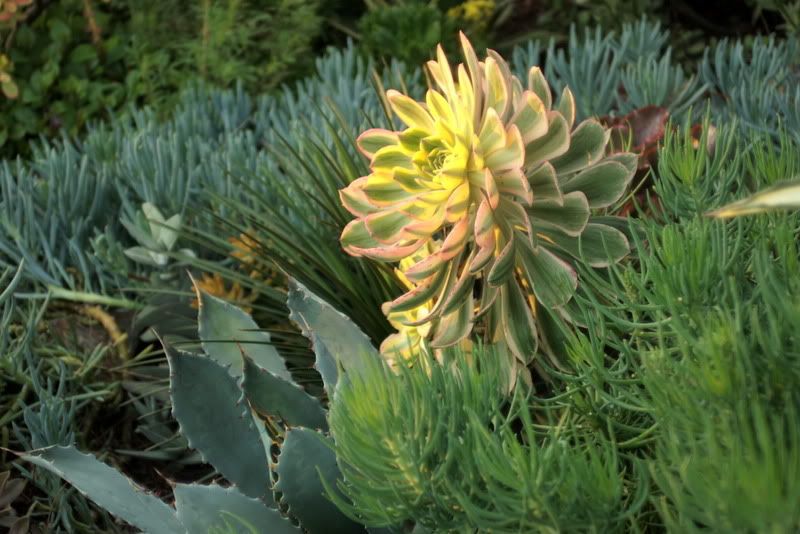
While I surreptitiously made a garden in the front yard, my neighbor across the street surreptitiously monitored its progress. Last summer she dug up her lawn and planted a mix of succulents and shrubs. Quite a few of my plants have found a new home across the street. I can’t claim all the credit; the civic water supplies are tightening due to a lengthy drought. Many of the front yards on my street have replaced the lawn with tough, drought-tolerant plants, native or otherwise. This ripple effect a front garden can have is something I never considered when planting it. Maybe it’s not such a bad thing that the city wouldn’t allow me to build an 8-foot wall around the front garden so many years ago.
